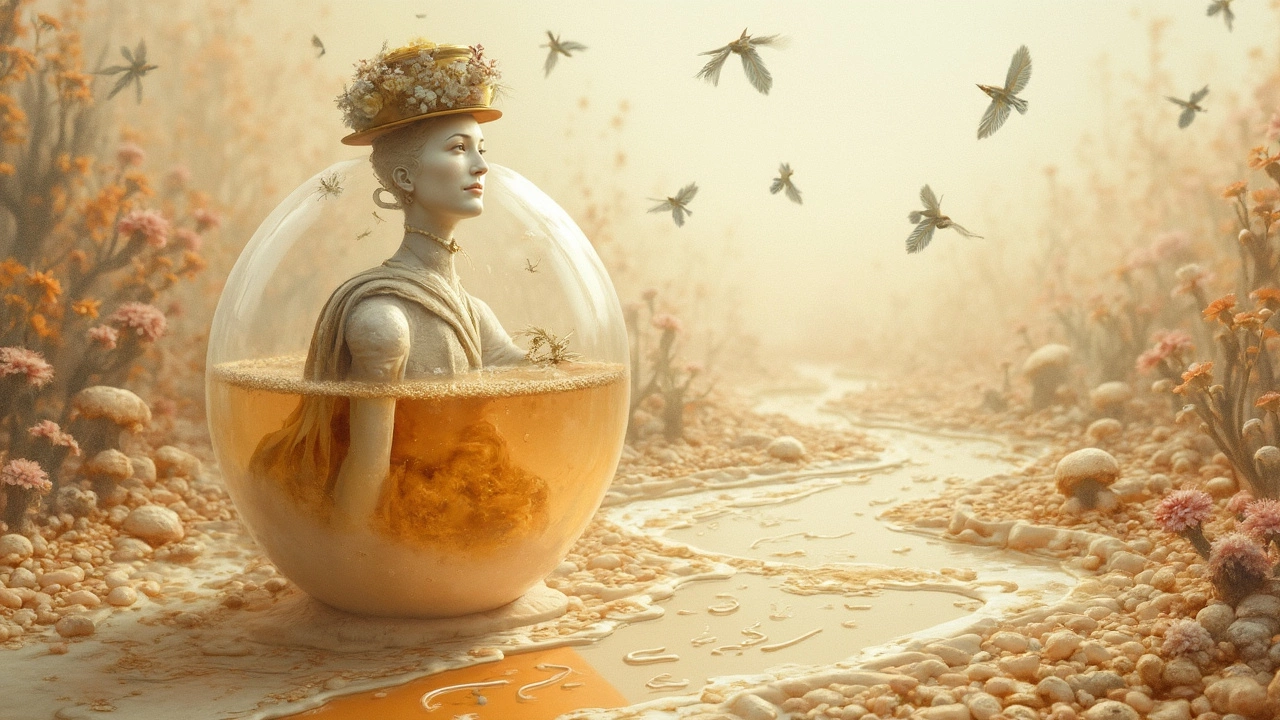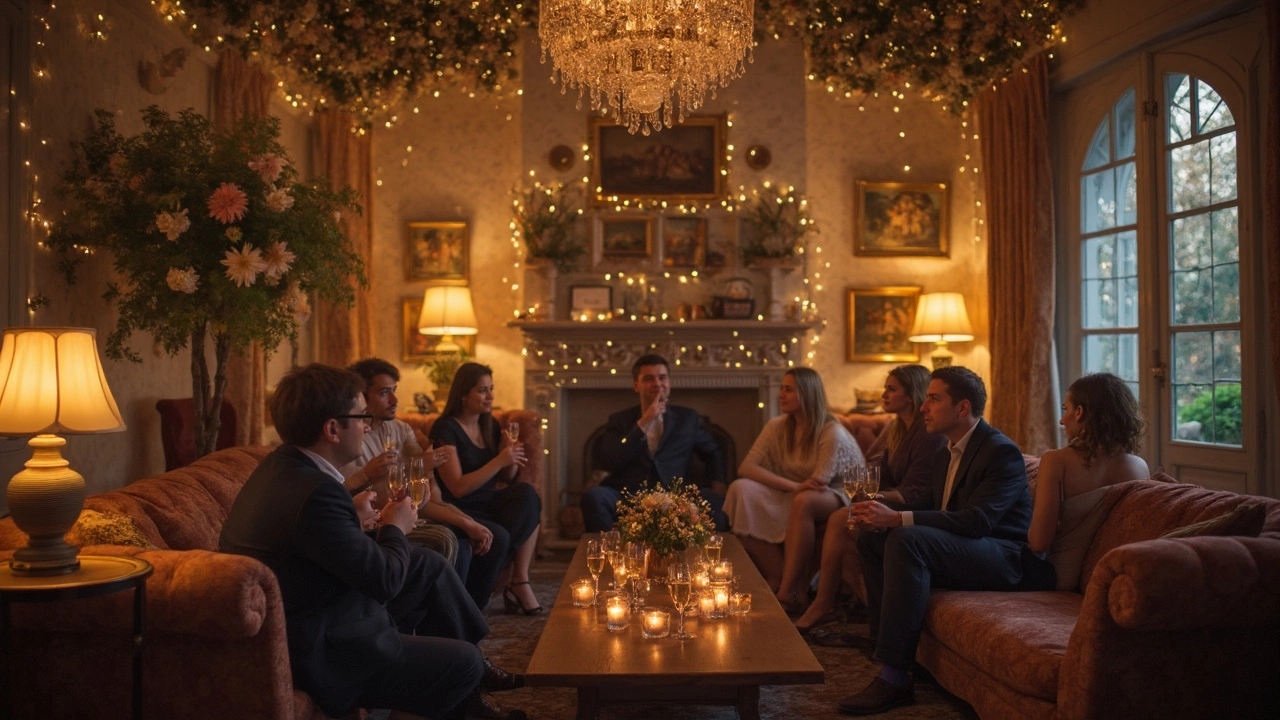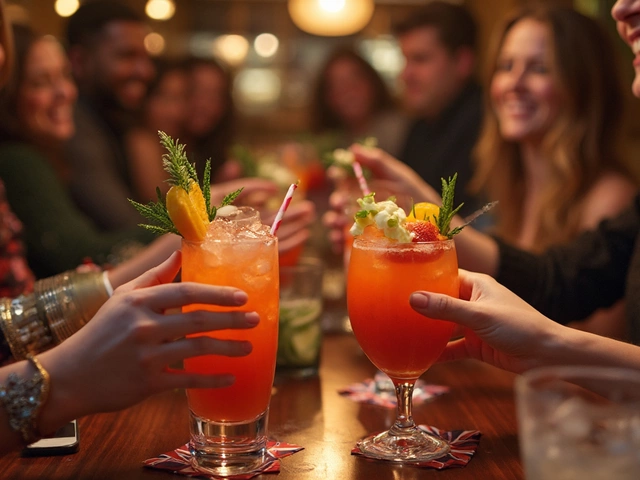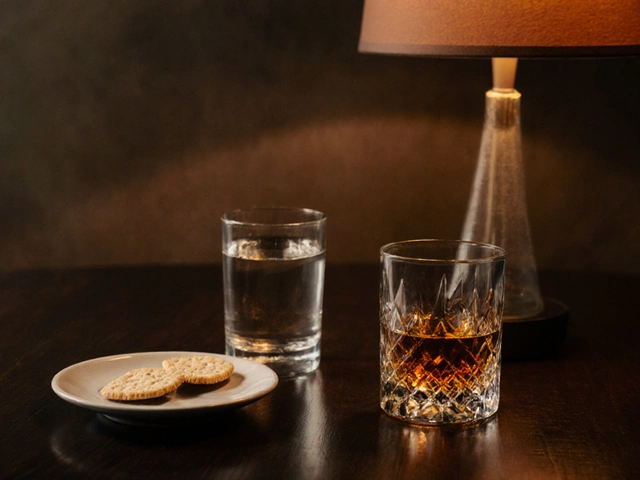Ever wondered how many glasses of champagne you'd need to sip before you start feeling a little wobbly? Well, it's not as simple as a one-size-fits-all answer. The amount of alcohol it takes to get tipsy varies greatly from person to person, influenced by factors like body weight, food intake, and even how quickly you drink.
First off, it's key to understand that champagne typically has an alcohol content of around 12%, similar to most wines. But here's the kicker—those delightful bubbles in champagne speed up the absorption of alcohol into your bloodstream. Remember those college days when beer seemed to hit harder than you thought? Same deal here.
Generally speaking, it might take about two to three glasses of bubbly for the average person to feel that light buzz—it's like the sweet spot where you start feeling more social. But play it smart, sip slowly, and enjoy each moment, especially during tastings where the goal is to savor, not chug.
- The Effects of Alcohol
- Factors Influencing Tipsiness
- Understanding Champagne's Alcohol Content
- Responsible Consumption Tips
- Fun Champagne Facts
The Effects of Alcohol
When we're talking about alcohol consumption, it's important to know how it messes with your body and mind. At first, you might feel looser and more outgoing. That's because booze hits up your central nervous system, slowing things down and diminishing your inhibitions.
Alcohol also impacts motor skills. This is why after a few glasses of champagne at a party, you might find yourself thinking you're ready to join the dance floor's center stage. But it's not just dance moves we're talking—coordination, reaction times, and judgment all take a hit.
Short-Term and Long-Term Effects
In the short term, consuming alcoholic drinks like champagne can make you feel flushed, dizzy, and unsure on your feet. Long-term effects, with repeated overindulgence, can lead to serious health issues like liver damage or heart disease.
How Your Body Processes Alcohol
Your system treats alcohol like a toxic substance, working hard to break it down. Typically, the liver can metabolize about one standard drink per hour, but don't push it—overloading it slows down the process.
| Body Weight (lbs) | Glasses to Get Tipsy |
|---|---|
| 120-140 | 1-2 |
| 140-160 | 2-3 |
| 160-180 | 3-4 |
Of course, this table gives a rough guide since metabolic rates can vary, and other factors like gender and food intake play huge roles. All in all, knowing these effects lets you make better choices and enjoy those bubbles responsibly.
Factors Influencing Tipsiness
So you're trying to figure out how many glasses of champagne it takes to get a bit tipsy? Well, there's a bunch of factors at play here that can change how alcohol hits you. It's not just about counting glasses.
Body Weight and Composition
First up is how much you weigh and your body composition. Generally, people with more body mass have a higher volume of blood to dilute the alcohol, which means they may handle a bit more. On the other hand, folks with lower body weight might feel the effects quicker.
Food Intake
If you’ve just scarfed down a hearty meal, it’s going to slow alcohol absorption. That's because the food acts like a sponge, soaking up some of that alcohol before it makes its way into your bloodstream. So, if you're having champagne tastings, a bit of cheese or crackers might help keep things under control.
Alcohol Tolerance
Your personal alcohol tolerance plays a big role too. Some people can take a few drinks with minimal effects, while others feel tipsy after just a sip or two. Regular drinkers often develop a higher tolerance.
The Bubbly Effect
Remember, the bubbles in champagne aren’t just for show. They actually absorb faster, so you're likely to get tipsy quicker than you would with flat drinks.
Pace and Drinking Environment
How fast you drink, and even the environment, matters too. If you’re at a lively party, you might find yourself drinking faster than you would while chilling at home. It’s easier to lose track and suddenly realize you’re several glasses in!
| Factor | Impact on Tipsiness |
|---|---|
| Body Weight | Heavier individuals may need more alcohol to feel tipsy |
| Food Intake | Food slows alcohol absorption |
| Alcohol Tolerance | Higher tolerance requires more to feel effects |
| Bubbly Nature | Makes alcohol absorb faster |
In a nutshell, the road to getting tipsy with champagne isn't a straight line—it zigzags through personal factors and circumstances. Keep an eye out for these influences to enjoy responsibly!

Understanding Champagne's Alcohol Content
So, what exactly makes champagne different from other types of booze? It's mainly in the bubbles. Champagne generally boasts an alcohol by volume (ABV) of around 12%, which is similar to most white and red wines. But here’s the twist—the bubbles make a difference in how quickly that alcohol can hit you.
Those lively bubbles actually speed up the alcohol's journey into your bloodstream. It’s the carbon dioxide in the bubbles that helps alcohol get absorbed faster. So, while a 12% ABV might sound like no big deal, it can really sneak up on you.
Types of Champagne
- Non-Vintage (NV): The most common type with predictable flavors, typically around 12% ABV.
- Vintage: From a single year, these might have a slightly different ABV due to varied grape conditions.
- Rosé: A bit fruitier, still usually sticking around that 12% ABV mark.
Here's an interesting tidbit: The region where champagne is made, like other wines, can influence its characteristics. The French region of Champagne holds strict laws about how it's produced, ensuring that the famed drink holds up to its reputation.
Compare with Other Alcohols
Curious about how champagne stacks up against other drinks? Here’s a quick glance:
| Drink | ABV Range |
|---|---|
| Beer | 4-6% |
| Wine | 11-15% |
| Spirits (e.g., whiskey, vodka) | 40% and above |
This doesn't mean champagne is inherently stronger, but the faster absorption means you might feel the effects sooner compared to sipping a glass of wine with a similar ABV.
So, next time you're with friends at a tasting, you can drop some knowledge bombs and enjoy your bubbly responsibly!
Responsible Consumption Tips
Being a responsible drinker isn't just about counting your champagne glasses—it's about knowing your limits and enjoying the moment without going overboard. Let's talk about some practical ways to keep your consumption in check while still having a blast.
Know Your Limit
Everyone's got a different threshold for getting tipsy, so it makes sense to know what works for you. Pay attention to how you feel after each glass of champagne. Stop if you start feeling more than just pleasantly warm and fuzzy. It's better to slow down than to wake up the next morning with regrets—and a headache.
Eat Before and While You Drink
No matter how experienced you are, drinking on an empty stomach is a recipe for disaster. Make sure you have some food before you start your champagne tasting. Munching on cheese, crackers, or any other snacks is a bonus, as they can help slow down the absorption of alcohol. Plus, who doesn’t love a good cheese platter next to a glass of bubbly?
Hydrate Like a Pro
Stay hydrated, folks! Champagne might be liquid, but it’s not going to quench your thirst like water does. Aim to drink a glass of water for every glass of champagne you have. It'll help you feel fuller and reduce the chances of getting a hangover the next day. Trust me, your future self will thank you.
Keep Track of Time
When you’re having fun, it’s easy to lose track of how long you’ve been consuming. Think about setting a timer on your phone for a break after every hour. It’s a simple way to pause, chat, and ensure you’re not rushing through your champagne.
Plan Your Ride Home
We can’t stress this enough—never drink and drive. Arrange alternative transportation before you start drinking. Whether you’re calling a taxi, using a rideshare app, or getting a designated driver, make smart choices right from the get-go. Safety first, always.
Champagne tastings are all about enjoying flavors and having a good time, but pace yourself. What matters most is savoring each sip and enjoying the company of friends, rather than the sole focus being on the alcohol itself.

Fun Champagne Facts
Alright, get ready for some cool tidbits that even the most seasoned champagne enthusiasts might not know. It's not just about sipping bubbly; it's about appreciating tradition, history, and even physics!
Champagne's Unexpected Origin
Did you know champagne was actually discovered by accident? This lovely bubbly drink was the result of a fermentation glitch in northeastern France. The cold winter in the region caused the fermentation process to pause, and when spring arrived, the yeast woke up, creating unexpected bubbles. Surprise, a new drink was born!
The Magic of Bubbles
Here's a fun fact: a glass of champagne contains about 49 million bubbles! These bubbles are key to the aroma and flavor, and they tickle your palate, enhancing the overall experience. It's the fizz that plays with your senses, making champagne truly joyous.
Champagne's Royal Connection
Champagne has long held a status symbol. It was the drink of choice at European royal courts. It's said that Louis XIV was a big fan, and if it was good enough for a king, you can bet it’s worth a try at your next celebration!
Temperature Matters
Want to get the most out of your bubbling delight? Keep it chilled! Serving champagne between 46-50°F (8–10°C) is ideal. At this temperature, you’ll preserve the bubbles and enhance the complex flavors hiding in your glass.
Benedictine Monks and Their Bubbly Legacy
This might surprise you, but a good portion of champagne's development is credited to Benedictine monks. Dom Pérignon, a monk from the 17th century, contributed to refining techniques that improved the quality of champagne production. So next time you sip, maybe whisper a 'thank you, Monks!' in appreciation.


